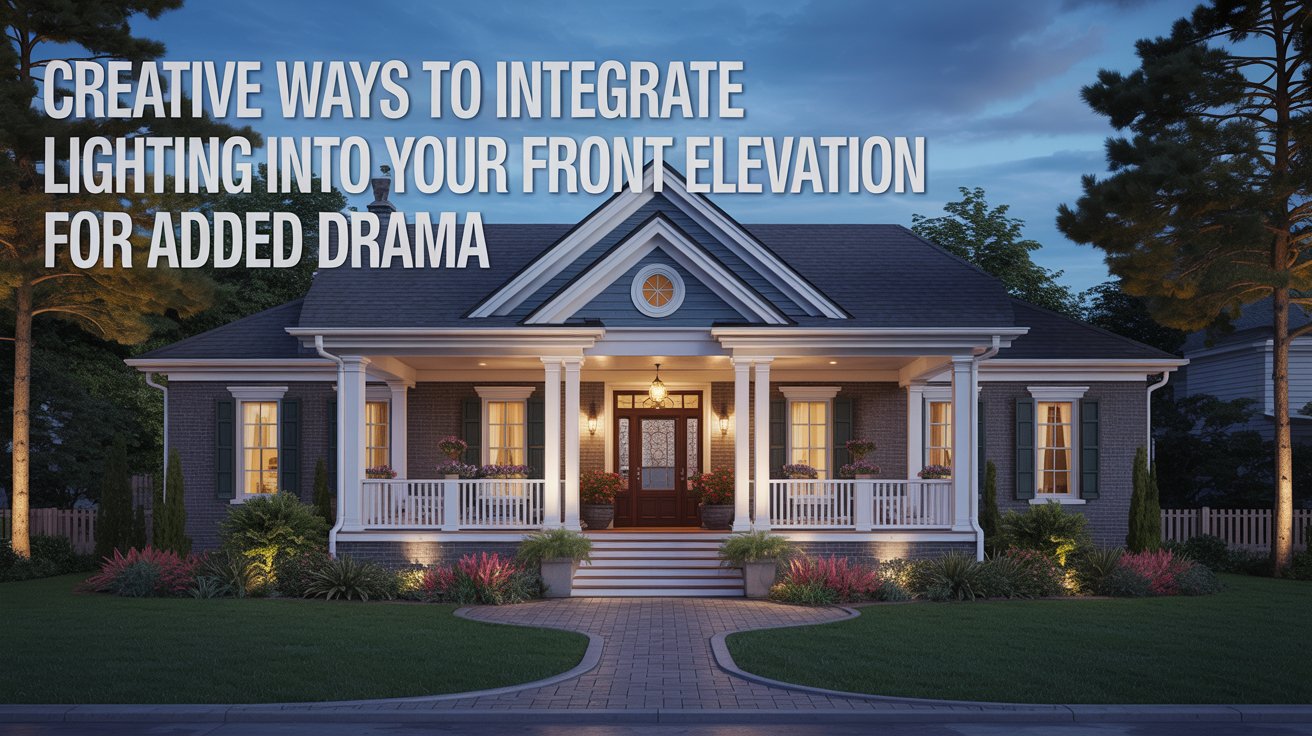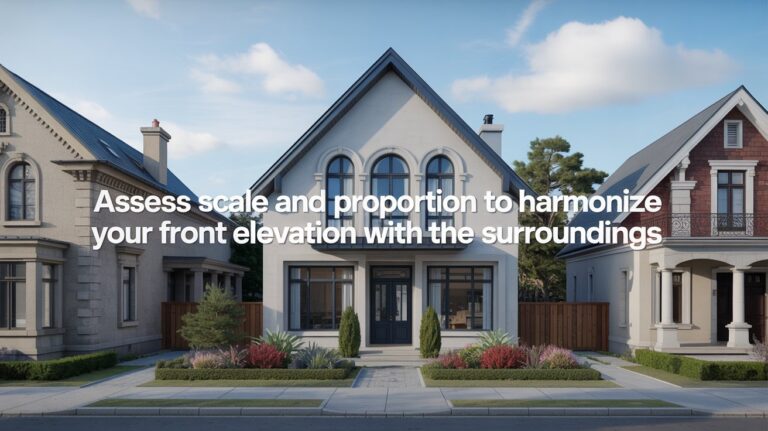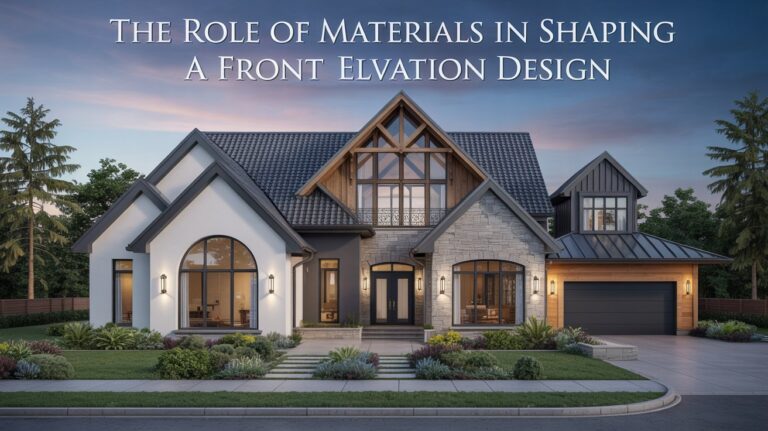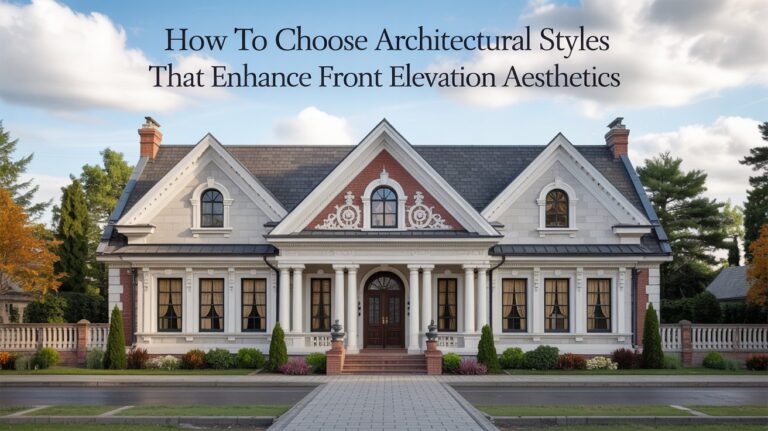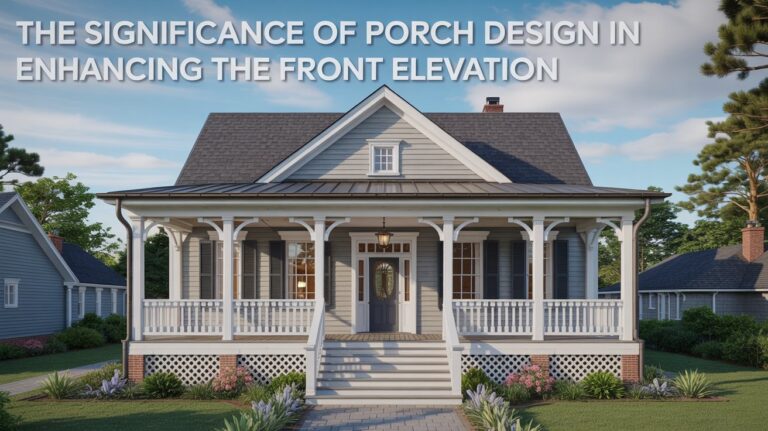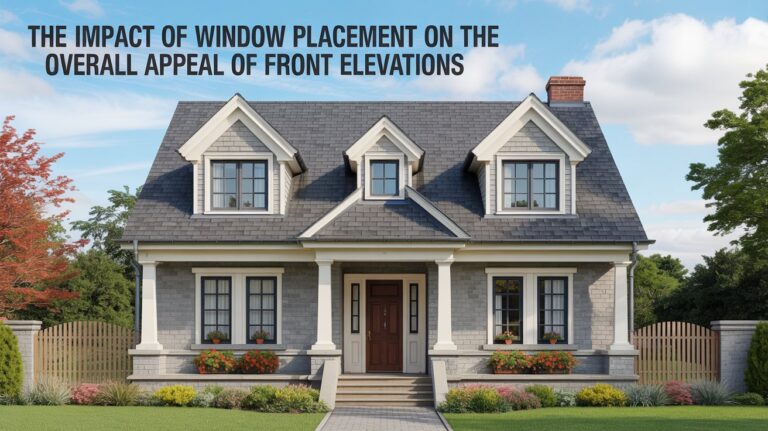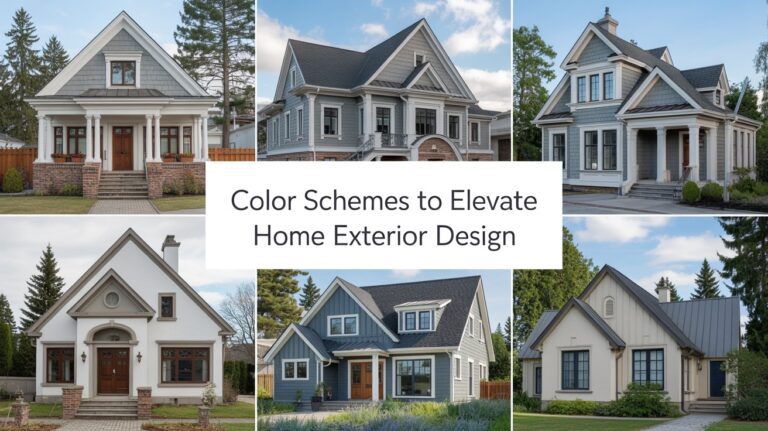Creative Ways to Incorporate Lighting Into Your Front Elevation for Added Drama
I have been, or can be if you click on a link and make a purchase, compensated via a cash payment, gift, or something else of value for writing this post. As an Amazon Associate, I earn from qualifying purchases. Please read my full Affiliate Disclosure for more information.
You can elevate curb drama with sculptural wall washes that emphasize vertical planes, using wall-mounted fixtures for even coverage and dimming control to adjust intensity from dusk onward. Create warm porch ambiance at 2700–3000K with eye-level lanterns and sconces to balance security and welcome. Layer pathway lighting with bollards, recessed, and low-profile wall fixtures to define edges while preserving sightlines. Finish with precise uplighting of cornices and pilasters to reveal texture and depth, hinting at more strategies ahead.
Key Takeaways
- Use sculptural wall washes to emphasize vertical planes with soft, even illumination and dimmable controls for drama from dusk onward.
- Create a warm porch glow with 2700–3000K lighting at entryways to invite, guide, and anchor the façade composition.
- Layer pathway lighting with bollards and recessed fixtures to frame the entrance while preserving sightlines and material cues.
- Highlight architectural features with low-glare, full-cutoff uplights aligned to planes for height and datum emphasis.
- Integrate texture lighting using grazing angles to reveal surface depth, blending warm and cool tones for rich material differentiation.
Elevate Curb Presence With Sculptural Wall Washes
Sculptural wall washes elevate curb presence by emphasizing the façade’s vertical planes with soft, continuous illumination. You deploy sculptural lighting to sculpt depth, creating legible silhouettes against masonry textures. Wall mounted fixtures are positioned to wash discrete surfaces evenly, avoiding hot spots and glare. Opt for a narrow-beam or asymmetric wash to accentuate cornices and pilasters, while ensuring color temperature remains consistent with overall exterior composition. Control fittings with dimming capabilities let you modulate intensity from dusk to after-hours, maintaining continuity. Precision mounting aligns fixtures to preserve architectural rhythm, delivering restrained drama without compromising safety or accessibility.
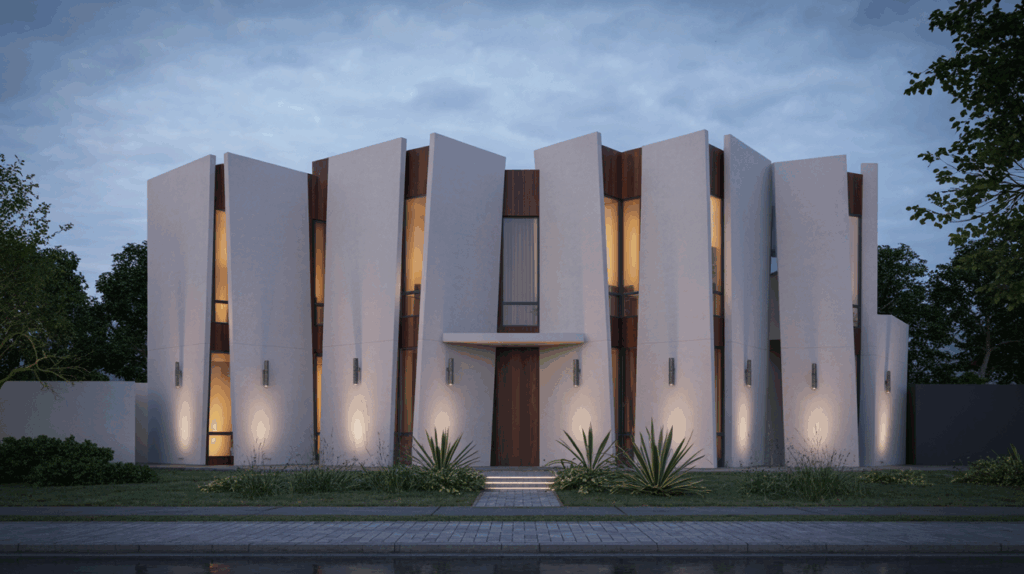
Warm Porch Ambiance: Balancing Light and Comfort
From the disciplined wall-wash of the previous topic, you shift focus to the porch as a human-scale comfort zone, where warmth and clarity set the welcome. You optimize color temperature around 2700–3000K to create a inviting ambiance without glare. Position garden lanterns at eye level for ambient glow and focal interest, while porch sconces provide functional lateral illumination that reduces shadow clutter near entry points. Balance luminance ratios between task and ambient layers to maintain visibility for threshold cues and security. Dimmed overrides and smart controls sustain consistency; choose high-CRI fixtures for true material rendering and durable finishes for exterior exposure.
Pathway Drama: Guiding Guests With Layered Lighting
Pathway drama emerges from deliberate layering of light that guides guests without glare or confusion. You implement layered luminance along the path using a disciplined mix of bollard, recessed, and low-profile wall fixtures, calibrated for boundary definition and visual comfort. Prioritize landscape integration so fixtures tuck into planting edges and hardscape margins, preserving sightlines while illuminating travel routes. Select color temperature to enhance material cues and safety—warmth near entry, cooler accents on pathways—capturing subtle tonal contrast. Guarantee glare control with shields and proper mounting heights, and verify uniform vertical luminance along the route to maintain legibility and engaging, cohesive arrival experience.
Highlight Architectural Features With Strategic Uplighting
Strategically uplighting the façade highlights key architectural features while maintaining ambient evening presence. You select a low-glare, full-cutoff luminaire to illuminate cornices, pilasters, and material textures without hot spots. Positioning aligns with architectural planes, using verticals to accent height and horizontals to reveal datum lines, while avoiding backlight toward street view. Calibrate beam spread, color temperature, and intensity to render true material color and finish. Garden accentuation and landscape illumination are integrated considerations, ensuring the uplight palette complements planting silhouettes. This approach delivers legibility of form, scale, and rhythm at a distance, supporting façade drama without overpowering architectural honesty.
Texture and Shadow: Creating Depth Through Contrast
Texture and shadow work together to reveal depth and materiality on the front elevation. You’ll leverage directional lighting to sculpt form, emphasizing color contrast and material texture through controlled luminance. Precision placement highlights edge definition while minimizing glare, ensuring legibility of details from varies viewpoints.
- Define highlight and shadow zones to maximize tactile cues
- Use grazing angles to intensify surface texture without washout
- Pair warm and cool hues to enhance color contrast
- Align fixtures with architectural lines for cohesive rhythm
- Test finishes under calibrated light for consistent perception
This approach foregrounds material truth while delivering architectural drama.
Energy-Smart Solutions for Fade-Resistant Facades
Can you reduce long-term maintenance while preserving color fidelity and fabric integrity on the front facade? This section examines energy-smart strategies for fade-resistant facades. Prioritize solar efficiency through optimized exterior luminance planning, daylight harvesting, and shading-aware lighting layouts that minimize daytime heat gain. Select high-CRI LEDs with stable chromatic output, matched to facade pigments, and use diffusers to control luminance uniformity without oversaturation. Implement automatic dimming and occupancy sensing to maintain target luminance while limiting runtime. Tie lighting controls to weather data and seasonal schedules, ensuring LED longevity, reduced energy use, and durable aesthetics across evolving façade materials.
Conclusion
Elevate front elevations with a cohesive lighting strategy that reads at multiple scales. You’ll balance glare control, color rendering, and fixture spacing to sculpt façades without overbright saturation. Prioritize wall washes for texture, along with low-profile uplights to define mass and cornices. Integrate dimming and color-tuning to modulate mood, while sustaining energy efficiency via LED sources and automated controls. This approach preserves architectural intent, enhances curb presence, and resists fading through material-aware, maintenance-friendly selections.
